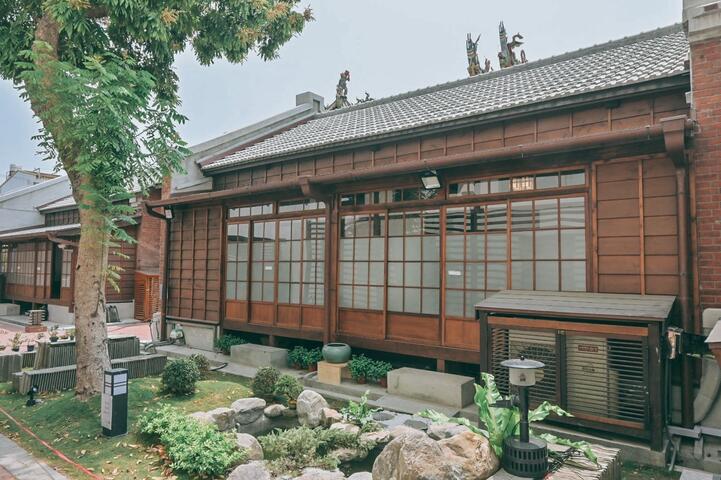Wuci Cultural Office Introduction
Located in the Wuchi District, adjacent to Wuchi Old Street and the Cultural Road business district, the "Former Wuchi Police Station and Dormitory Complex," designated as a municipal historic site, officially opened to the public as "Wuchi Cultural Branch" on March 28, 2021. This historic site, spanning nearly 90 years, bears witness to the comprehensive system of police institutions and police quarters from the Japanese colonial period to the Nationalist Government period, as well as the rise and fall of the Wuchi Port Street. Recently, it launched "Taiwan's first historic site bed and breakfast," allowing visitors to experience unique aspects of Taiwanese-Japanese culture from various perspectives. The Wuchi Cultural Branch is located at the center of Wuchi Old Street, next to the Cultural Road business district and the century-old Chaoyuan Temple. It centers on the idea of "revitalizing an old street through an old building," using the sentiment of "old buildings and old streets telling stories" to connect cultural elements related to the port street. It also plans a series of activities for historic site preservation, cultural education promotion, and repurposing initiatives, hoping to work with local residents to revitalize the old street and showcase the irreplaceable charm of the century-old port street in Wuchi. The "Former Wuchi Police Station and Dormitory Complex" was built in the sixth year of the Showa era (1931) and was designated as a county-level historic site on November 8, 2010 (after the county and city merger, it became a municipal historic site). It is one of the few historic sites in Taiwan that retains both police station quarters and dormitory complexes. The site includes the police station quarters, a duplex brick dormitory, a single-unit wooden dormitory, a single-unit brick dormitory, and an air raid shelter. The current address is No. 142 Wuchi Road, built in the sixth year of the Showa era (1931). Among the existing buildings, only the "Police Station Quarters and Dormitory (Building A)" experienced the Tamsui Earthquake in the tenth year of the Showa era (1935), while the other buildings were constructed after the earthquake. In addition to historic site tours, exhibitions of port street customs, and art exhibitions, the site also plans to offer experiences such as kimono wearing, ema (wishing plaques) at a blessing pavilion, and fortune poetry strips, providing various Japanese cultural experiences. The most unique aspect is that the Wuchi Cultural Branch is also the first legally licensed historic site bed and breakfast in Taiwan, where people can personally experience daily life in a special Japanese historic site, savoring the cultural elegance of the site. Guided tours: ■ Available □ Not available ■ Reservation required. Reservation phone number: 04-26565658 Other services: ■ Kimono experience ■ Historic site bed and breakfast ■ Dining Brand: 翌日よくじつ ■ Other: Irregular special exhibitions, Japanese-style markets Source of images and text: Wuchi Cultural Branch





























